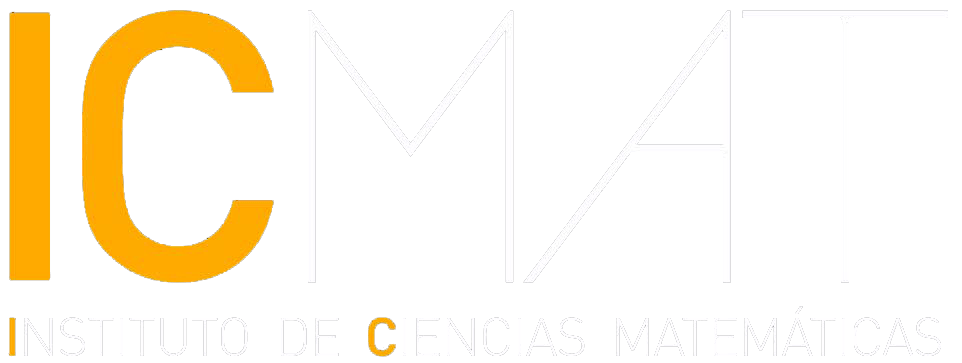Luis Álvarez-Cónsul (ICMAT-CSIC), David Fernández (Universidad Politécnica de Madrid, UPM), and Reimundo Heluani (IMPA) are the authors of ‘Noncommutative Poisson vertex algebras and Courant-Dorfman algebras’, published in Advances in Mathematics.

Image: Íñigo de Amescua/ICMAT
This paper is devoted to noncommutative variants of Courant–Dorfman algebras and Poisson vertex algebras. On the one hand, a Courant–Dorfman algebra is an algebraic version of a Courant algebroid, i.e., a symplectic Lie 2-algebroid. This is a geometric object motivated by work initiated independently, but simultaneously, by Ted Dirac on Dirac manifolds , and by Irene Dorfman on integrable systems, and it is currently relevant in geometry and physics, specifically in generalized complex geometry, supergravity, conformal field theory and higher gauge theory. On the other hand, a Poisson vertex algebra is the underlying algebraic structure of a classical field theory. It provides a unifying approach to integrable Hamiltonian partial differential equations, and receives its name because the quasi-classical limits of Borcherds’ vertex algebras are always of this type. Courant–Dorfman algebras and Poisson vertex algebras are intimately related. Indeed, graded Poisson vertex algebras freely generated in degrees 0 and 1 are in bijection with Courant–Dorfman algebras.
It is a remarkable fact that many integrable Hamiltonian equations admit generalizations in which the field variables take their values in a (noncommutative) associative algebra, that can be viewed as quantized versions of the classical integrable systems. The intricate calculations involved in these generalizations can be interpreted with tools that originate in the geometric study of the moduli stacks parametrizing the algebra representations. The Kontsevich–Rosenberg principle is a heuristic rule, used in this context, whereby a structure on an associative algebra is ‘geometric’ if it induces the corresponding geometric structure on the representation moduli stacks.
Crawley-Boevey–Etingof–Ginzburg (2007), Van den Bergh (2008) and De Sole–Kac–Valeri (2015) have constructed noncommutative variants of symplectic, Poisson, quasi-symplectic and Poisson vertex algebras that satisfy the Kontsevich–Rosenberg principle. They are noncommutative structures that do not reduce to the standard commutative structures when the algebras are commutative, but still they induce the corresponding geometric structures on the representation moduli stacks. The central mathematical concept introduced in the paper under review is a ‘double Courant–Dorfman algebra’. The authors show that this concept satisfies the Kontsevich–Rosenberg principle and that it is equivalent to a noncommutative Poisson vertex algebra freely generated in degrees 0 and 1. In order to get nontrivial examples, the authors prove a new Cartan identity for noncommutative differential calculus. Together with identities previously obtained by Crawley-Boevey–Etingof–Ginzburg (2007) and Van den Bergh (2008), they uncover a noncommutative variant of the Cartan differential calculus used in ordinary geometry.
Reference: Álvarez-Cónsul L, Fernández D, Heluani R. Noncommutative Poisson vertex algebras and Courant–Dorfman algebras. Adv Math. 2023;433:109269. doi:10.1016/j.aim.2023.109269
